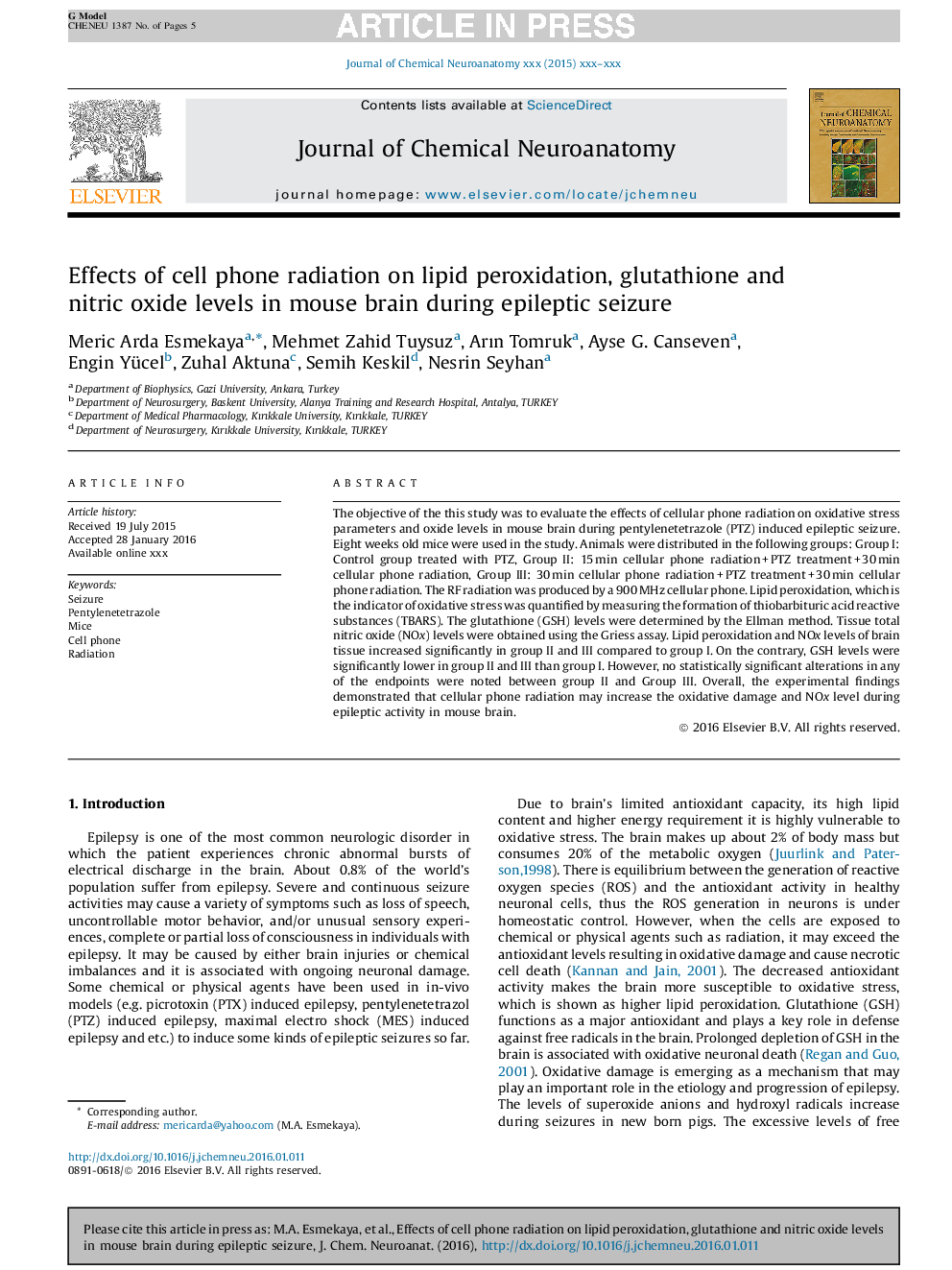| Article ID | Journal | Published Year | Pages | File Type |
|---|---|---|---|---|
| 10825283 | Journal of Chemical Neuroanatomy | 2016 | 5 Pages |
Abstract
The objective of the this study was to evaluate the effects of cellular phone radiation on oxidative stress parameters and oxide levels in mouse brain during pentylenetetrazole (PTZ) induced epileptic seizure. Eight weeks old mice were used in the study. Animals were distributed in the following groups: Group I: Control group treated with PTZ, Group II: 15 min cellular phone radiation + PTZ treatment + 30 min cellular phone radiation, Group III: 30 min cellular phone radiation + PTZ treatment + 30 min cellular phone radiation. The RF radiation was produced by a 900 MHz cellular phone. Lipid peroxidation, which is the indicator of oxidative stress was quantified by measuring the formation of thiobarbituric acid reactive substances (TBARS). The glutathione (GSH) levels were determined by the Ellman method. Tissue total nitric oxide (NOx) levels were obtained using the Griess assay. Lipid peroxidation and NOx levels of brain tissue increased significantly in group II and III compared to group I. On the contrary, GSH levels were significantly lower in group II and III than group I. However, no statistically significant alterations in any of the endpoints were noted between group II and Group III. Overall, the experimental findings demonstrated that cellular phone radiation may increase the oxidative damage and NOx level during epileptic activity in mouse brain.
Related Topics
Life Sciences
Biochemistry, Genetics and Molecular Biology
Biochemistry
Authors
Meric Arda Esmekaya, Mehmet Zahid Tuysuz, Arın Tomruk, Ayse G. Canseven, Engin Yücel, Zuhal Aktuna, Semih Keskil, Nesrin Seyhan,
